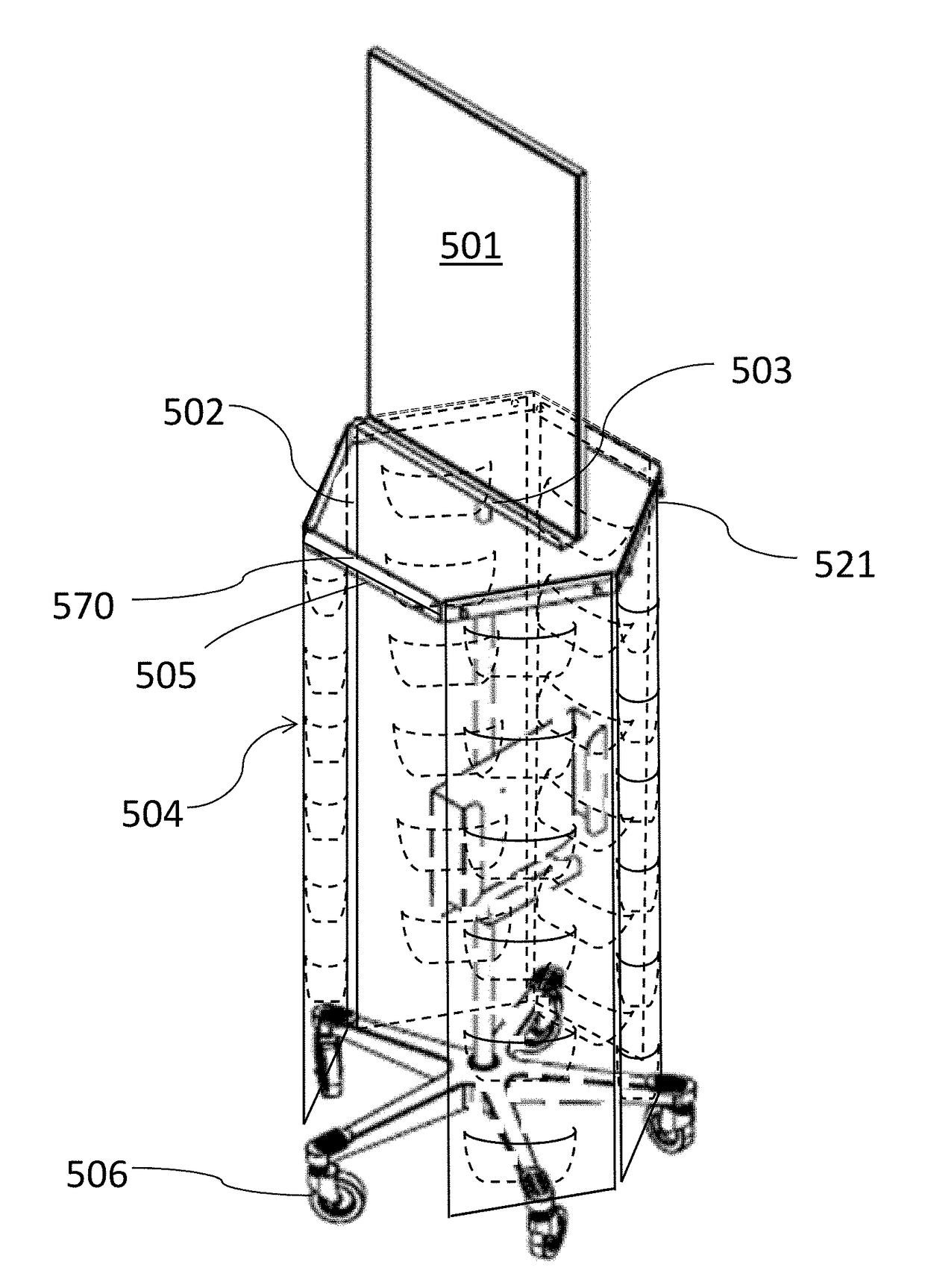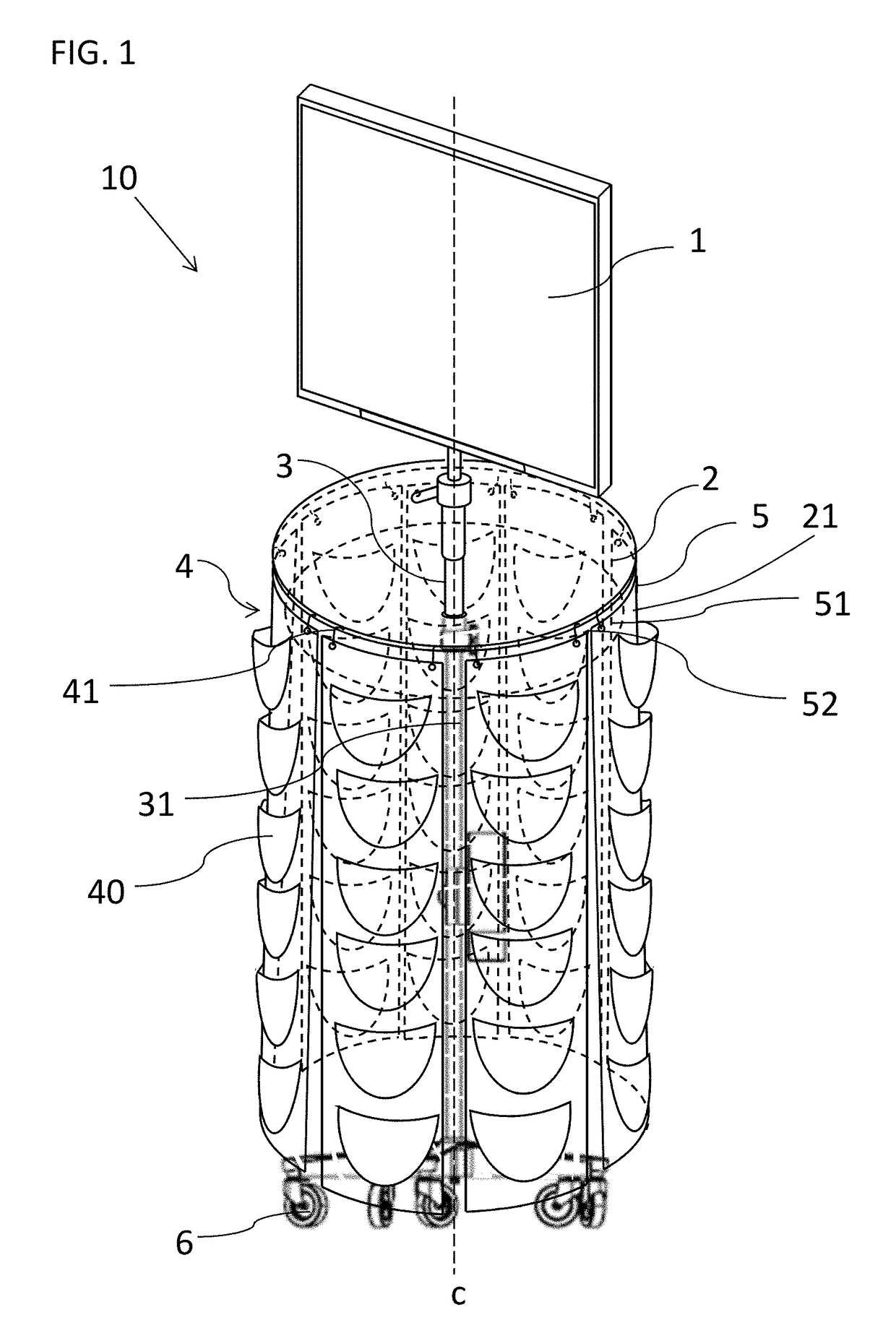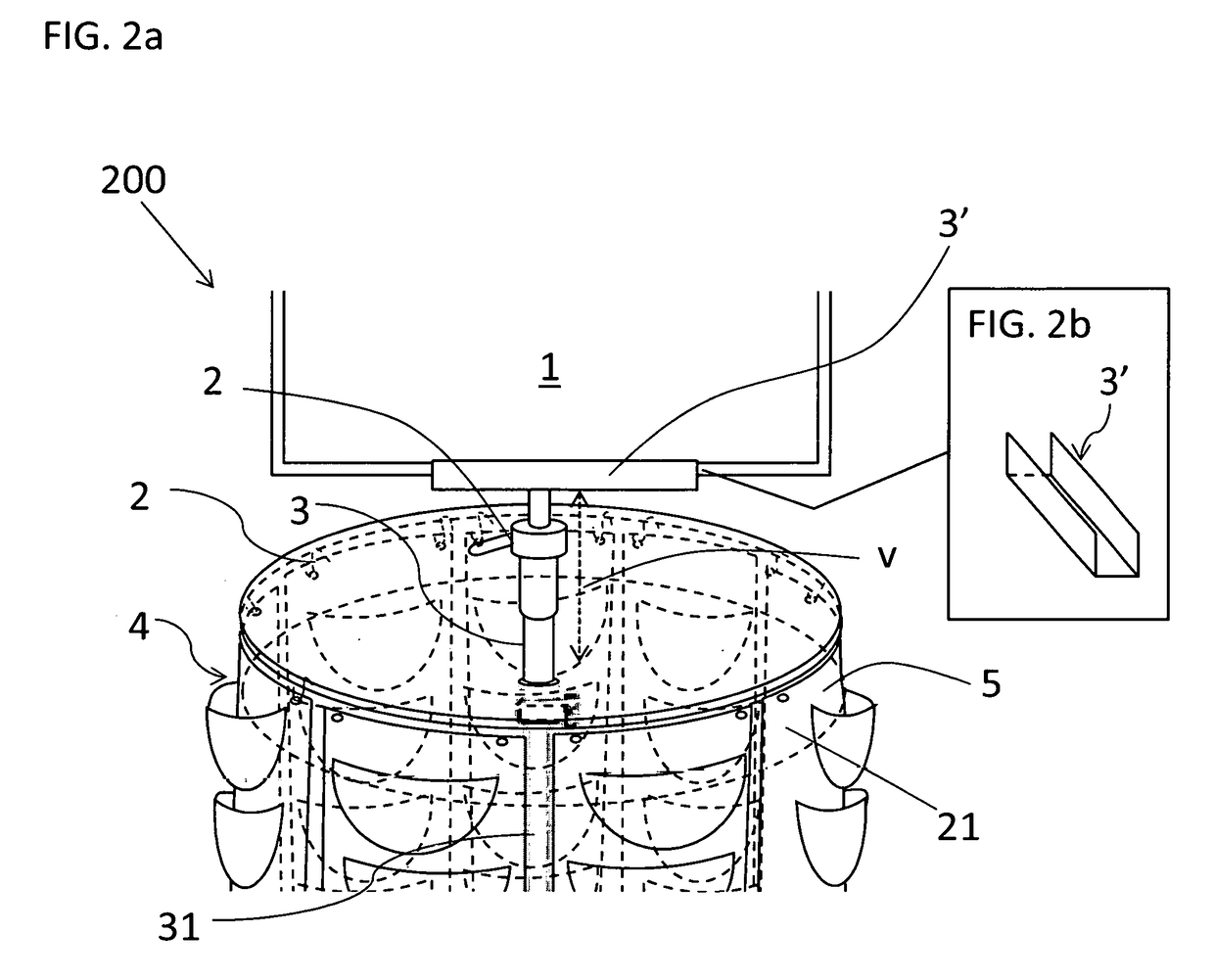Surgical item counting station and method of use
a technology for counting stations and surgical items, applied in the field of medical devices, can solve the problems of incorrect site procedures, no definitive method to account for objects, and significant surgical patient safety problems, so as to reduce unnecessary movement, reduce the duration of counting, and improve efficiency
- Summary
- Abstract
- Description
- Claims
- Application Information
AI Technical Summary
Benefits of technology
Problems solved by technology
Method used
Image
Examples
Embodiment Construction
[0025]The subject invention provides a surgical item counting station for organized placement and accounting of surgical items / objects and a visible method for accounting of their whereabouts at all times. Before significant procedures on a patient can go forward, surgical room personnel can be required to check the status of an object on a display screen attached to this invention. It may be called in a more generic sense a “count stand”, but in a more formalized setting, a “count station” or a “circulator station” referring to the RN role of a circulator, a RN who is not “scrubbed” and considered non-sterile. Surgical items are herein referred to as items used during a surgical procedure, including for non limiting example, needles, sponges, clamps, needle holders, forceps, scapula, scissors, medications, syringes, specimen containers, sterile and non-sterile supplies, surgical instruments and tools, etc. Though the subject invention herein is discussed as having particular applic...
PUM
 Login to View More
Login to View More Abstract
Description
Claims
Application Information
 Login to View More
Login to View More - R&D
- Intellectual Property
- Life Sciences
- Materials
- Tech Scout
- Unparalleled Data Quality
- Higher Quality Content
- 60% Fewer Hallucinations
Browse by: Latest US Patents, China's latest patents, Technical Efficacy Thesaurus, Application Domain, Technology Topic, Popular Technical Reports.
© 2025 PatSnap. All rights reserved.Legal|Privacy policy|Modern Slavery Act Transparency Statement|Sitemap|About US| Contact US: help@patsnap.com



